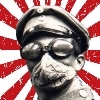- M. Höhne
- Key Master
 Offline
Offline - From: Maine
- Registered: 14-3-2013
- Posts: 646
Re: SG Owners Club
Mounted as intended, mine lies back at 34° measured. (O, those magical phones!) I'm not going to switch it around again, so I don't know if the two mountings are different, but it's different from both of yours. I note the mount point isn't particularly strong, so I'm going to suggest that one or both of ours are bent a little. I'm glad you got yours working; it's a nice feature.
- Pete E.
- Typewriter Talk Elite
 Offline
Offline 
- From: Idaho - USA
- Registered: 23-6-2020
- Posts: 2,532
Re: SG Owners Club
On Olympia SG1's with a wide carriage, do the serial numbers of the carriage ever match the serial number of the frames ?
My machine frame is SN 7-6622xx but the 12" wide carriage is SN 8-6832xx.
Does my differing SN on the carriage mean it was ordered later and placed on my machine in the past ?
.
- M. Höhne
- Key Master
 Offline
Offline - From: Maine
- Registered: 14-3-2013
- Posts: 646
Re: SG Owners Club
I have (or maybe had) an SG1 or SG3 with matching numbers on the frame and carriage, but I don't think it means anything in particular. They might have left the factory that way, or maybe sometimes not, in order to fill a certain order, but I don't think you can infer anything definite or definitive about the way we find them now. I have switched carriages and then forgotten about it, so what would that mean to a future owner? Some business got typewriters and then additional carriages for certain uses. Repairs, too.
The main use of serial numbers is warranty claims, inventory control, and ID of stolen items. It is of more concern in authenticating automobiles and firearms, where parts were not intended to be swapped and where it might reveal seller chicanery. Our main current use is determining date of manufacture. If one has matching numbers on separate parts, it is just an interesting occurrence, like finding consecutive serial numbers on eBay purchases eight years apart.
- Pete E.
- Typewriter Talk Elite
 Offline
Offline 
- From: Idaho - USA
- Registered: 23-6-2020
- Posts: 2,532
Re: SG Owners Club
Thanks, Uwe !
- Laurenz van Gaalen
- Speed Champion
 Offline
Offline 
- From: The Netherlands
- Registered: 20-7-2019
- Posts: 417
- thetypewriterman
- Key Master
 Offline
Offline - From: Leiston, England
- Registered: 29-5-2013
- Posts: 942
Re: SG Owners Club
My goodnes me ! I have never seen one of those in over 45 years of dealing with typewriters. How very, very interesting. Now we can see where Olympia got the idea of doing away with the open cast frame sides on the later SG3 and substituting plain steel plates. Olympia tried a 'semi-office' machine again in the early 1970's - the Olympia SKM. Basically an SM9 with a longer carriage enclosed in a larger plastic case to give the impression of a much larger machine. Not many of those were sold either. I think that Olympia were aiming for the niche market of the Adler Special - but it wasn't Adler's best seller and I think Adler only kept it in production for so long to get the money back for the tooling !
- Pete E.
- Typewriter Talk Elite
 Offline
Offline 
- From: Idaho - USA
- Registered: 23-6-2020
- Posts: 2,532
Re: SG Owners Club
I traded comments with Chris in his posting in the Face Book Group.
I was wondering how Tabs are set. I saw the lever on the left side of the key-tips with their small square and large square symbols which I assumed were touch-controls and not Tab set/clear controls.
But Chris confirmed that lever did indeed set/clear the Tabs.
I would have thought Olympia would have used the + and - symbols like they did on the later production of SM9s when the keys on either side of the space bar were eliminated.
- Uwe
- Moderator
 Offline
Offline 
- From: Toronto, Canada
- Registered: 12-3-2013
- Posts: 4,410
Re: SG Owners Club
Laurenz van Gaalen wrote:
Interesting. Apparently there was an SG2.
Do you know if this person has any documentation that identifies it as a "SG2" or has he arbitrarily given this machine that name? It would be nice to know the physical dimensions of this find for comparison.
The pronoun I has always been capitalized in the English language for more than 700 years.
- •
- Laurenz van Gaalen
- Speed Champion
 Offline
Offline 
- From: The Netherlands
- Registered: 20-7-2019
- Posts: 417
Re: SG Owners Club
Uwe wrote:
Do you know if this person has any documentation that identifies it as a "SG2" or has he arbitrarily given this machine that name?
No, but that is a good question. I've asked the ownder via the comment function on the TWDB.


